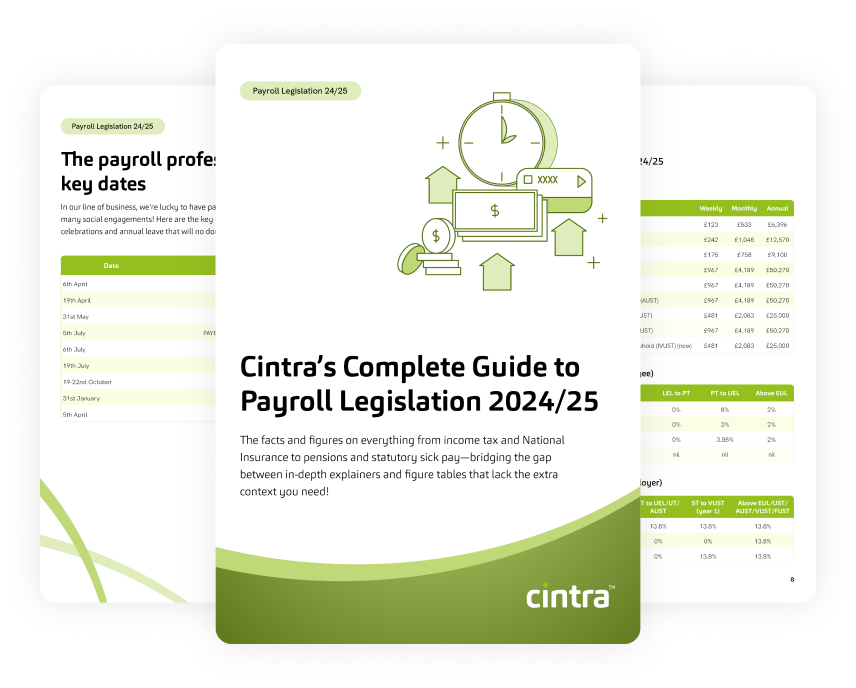Although the terms “wage” and “salary” are often used interchangeably, there are some key points on which they vary.
Understanding these distinctions is crucial not only for you but for your employees. It lays the foundation for clarity in compensation structures and promotes transparency in employment relationships.
Let’s take a look at each term, their pros and cons, and their main differences.
Wage vs salary: the definitions
What is a salary?
A salary is a fixed payment given to an employee on an annual or monthly basis, typically associated with full-time employment. It remains constant regardless of the specific hours worked and often comes with additional benefits such as pension contributions, healthcare, and holiday allowances.
What is a wage?
A wage is the money paid to employees based on the hours they work, typically calculated at an hourly rate. This mode of payment is common in jobs where hours can vary, or in part-time or casual work. Wages are widely used in industries such as retail, hospitality, and construction.
Wage vs salary: the pros and cons
The benefits of wages
| For you | For your employees |
|---|---|
| Cost effective: paying employees by the hour can save you money because you can schedule precisely the number of hours and staff required for any given month. |
Overtime opportunities: waged employees can substantially increase their earnings by making the most of overtime opportunities. This is especially true during peak business periods like Christmas or Black Friday. |
|
Greater flexibility: wage-based compensation provides exceptional flexibility. It enables people to adjust their hours to accommodate various life commitments like education, family responsibilities, or pursuing personal interests. |
The disadvantages of wages
| For you | For your employees |
|---|---|
| Higher turnover rates: waged employees might decide to leave for a salaried position in order to receive more financial stability. |
Fluctuating income: the biggest challenge for waged employees is the unpredictability of their income. While many waged employees have full-time contracts, those on lower hour contracts are particularly susceptible to income fluctuations. These fluctuations can occur due to seasonal variations, (there’s typically less work after the holiday periods). Or if the business needs to cut down on expenses (more often than not, employee hours are the first to go). |
|
Lack of comprehensive employee benefits: waged employees are often entitled to fewer benefits compared to salaried employees. This could lead to people missing out on essential benefits like private health insurance, which are more common in salaried positions. |
The benefits of salaries
| For you | For your employees |
|---|---|
| Salaries are more stable: since salaries remain constant throughout the year—except for bonuses and pay rises—it’s easier to calculate your overheads. |
Financial security: the most significant advantage of a salary is the consistent income it provides. Salaried employees know exactly what they are going to earn over the course of an annual period, which means they can better break down their monthly and weekly budgeting. |
| Extensive benefits: salaried employees are generally entitled to a set of more comprehensive benefits than their waged counterparts, such as private healthcare coverage and other perks. |
The disadvantages of salaries
| For you | For your employees |
|---|---|
|
Lack of flexibility: salaried roles often come with fixed working hours. So when extra help is required outside of regular business hours, salaried employees may be less willing to accommodate such requests compared to waged employees. |
Expectation of overtime: salaried employees, particularly those in managerial roles, can face the expectation of working beyond their contracted hours without additional compensation. |
|
Difficulty to separate work and personal life: salaried employees often find it challenging to maintain a clear distinction between their professional responsibilities and personal life. This usually results in individuals taking work home with them or working well past close of business (COB). |
Get the latest insights and best practice guides, direct to your inbox.
Wage vs salary: The key differences
By now you should know that the main difference between “wage” and “salary” lies in their payment structures.
A wage is remuneration disbursed on an hourly, daily, or weekly basis. Whereas a salary constitutes a predetermined sum, typically paid out on a monthly basis.
Let’s take a look at the differences between wage and salary when it comes to:
Absent days:
Waged employees may experience deductions in pay for days absent from work, as their earnings are directly tied to the hours they complete.
Salaried employees on the other hand, typically receive a fixed salary regardless of the number of days worked. Although excessive absences will certainly lead to disciplinary action and loss of earnings.
Employee benefits:
Salaried employees often receive a more comprehensive benefits package, including health insurance and higher pension contributions compared to waged employees.
Position and responsibility:
Salaried employees commonly hold positions of higher responsibility, such as executive, managerial or senior roles, with greater autonomy and decision-making authority.
Waged employees typically occupy more entry-level or hourly positions with less authority. However, it’s important to note that there are of course exceptions to this generalisation.
Overtime:
Waged employees typically receive overtime pay for exceeding standard hours, calculated at a higher rate than their regular hourly wage.
Salaried employees generally do not receive additional compensation for overtime hours, as their salary is intended to cover all work within a pay period. Their employment contracts will usually include clauses outlining expectations for working additional hours when necessary.
It’s worth noting that as per the Work Time Directive of 1998, it is not permissible to mandate salaried employees to surpass an average of 48 hours of work per week.
Nevertheless, employees have the choice to voluntarily consent to work beyond this threshold, if there is a written agreement in place.
Seamless payroll with Cintra
We know payroll is complicated, especially if you have a mix of salaried and waged employees.
But with Cintra in your corner, rest assured that everyone will get paid on time, every time.
Book a personalised demo today to see either Cintra’s payroll software or outsourced services in action.

Payroll Compliance Checklist
All the topics you need to keep your payroll compliant, providing you an overview of each and finishing with a practical checklist!
Download now


